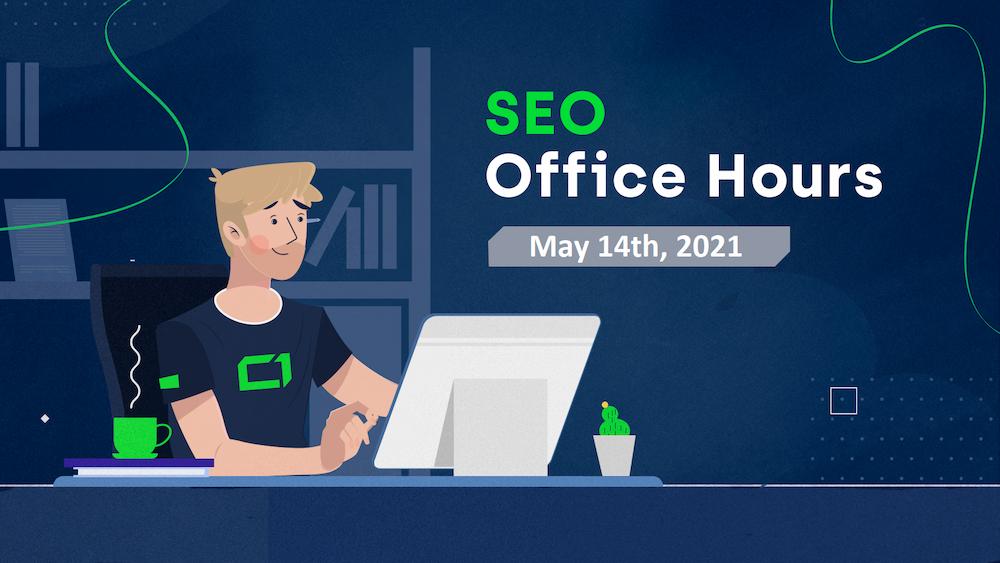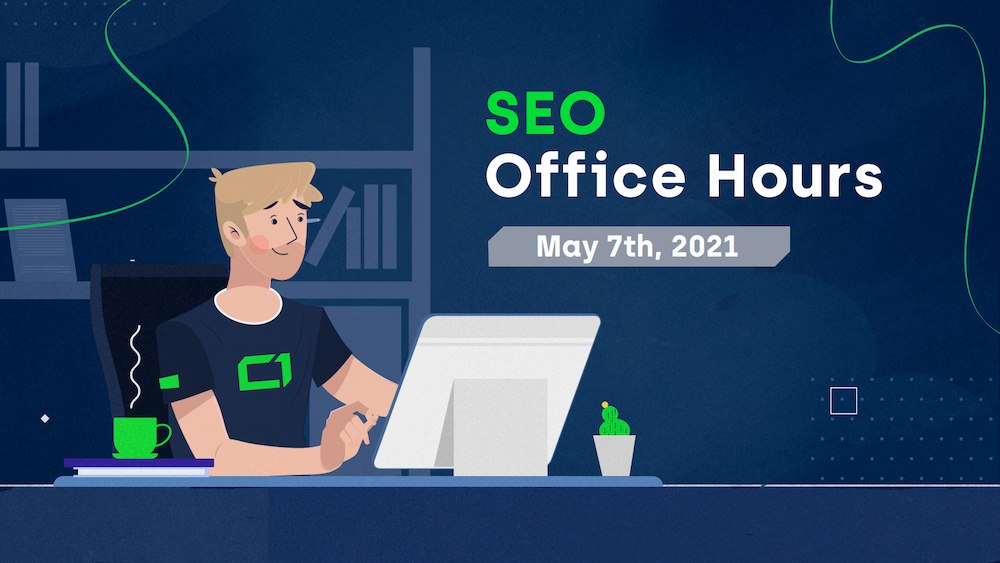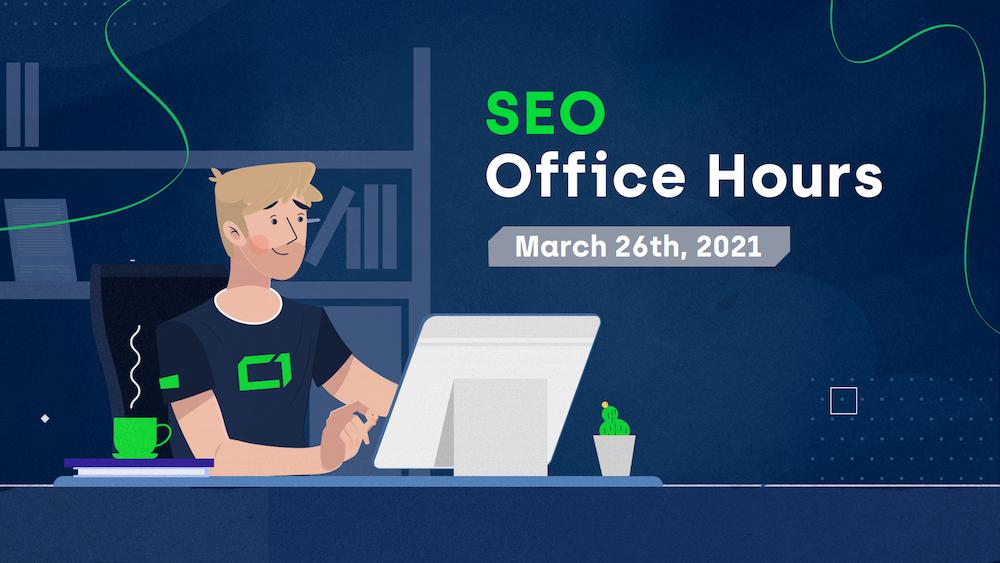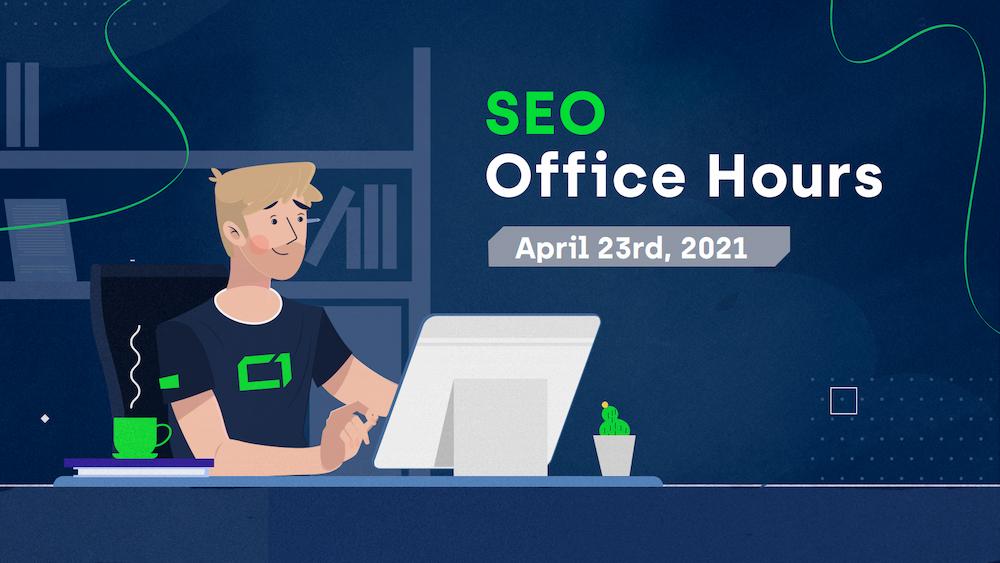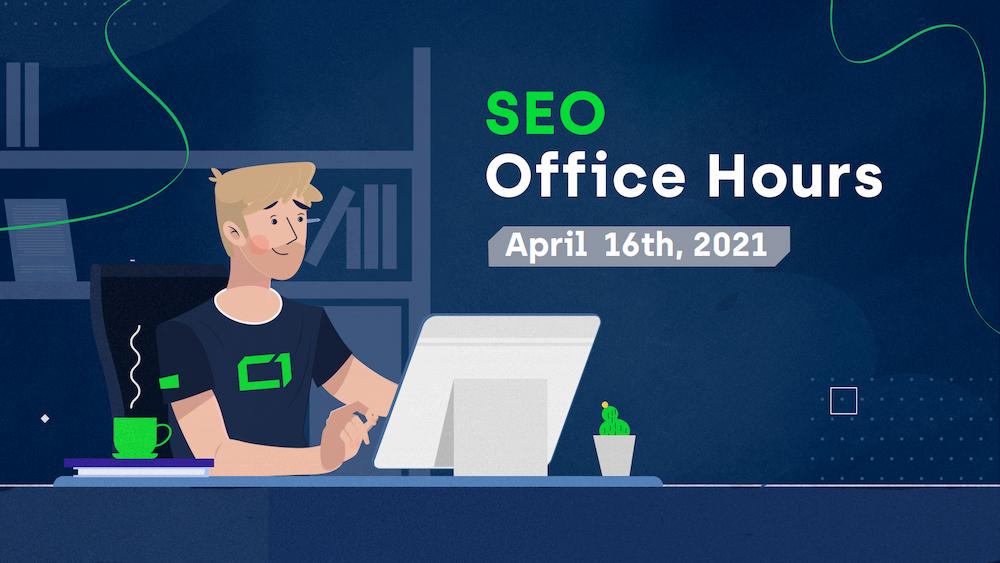This is a summary of the most interesting questions and answers from the Google SEO Office Hours with John Mueller on May 14, 2021.
Quality pages and ranking signals
01:33 – “We recently cut down from about 500 000 pages to 5. These pages work great and have 100% conversion rates. Nonetheless, they are still ranking on pages 7 or 8 in Google SERPs. How can Google recognize that these are valuable pages? Is there anything we can do from our side?”
John said, “In general, this kind of process takes quite a lot of time […] It’s less a matter of Google seeing signals that people on page 6 find this a great result, but more a matter of us recognizing that across the web this is actually something that is relevant and that we should be showing more visibly in search results”.
Concentrating on fewer pages on your site makes a lot of sense. That way you don’t have to collect signals for each of these individual pages.
Still, John said that a change of going from several thousand to a handful of pages would take a couple of months or even up to half a year at least for things to settle down.
“In the meantime, you can still do things to help promote your website”, John added.
Search Console and site: query discrepancies
21:07 – “I have 170 valid pages in Search Console, but when I check it through the site: query it just says 3, sometimes 5 pages. That has been happening for about 3-4 months now.”
John said, “In general, I would not worry about the difference between what a site colon query shows and what search console shows. In practice, the site colon query is not meant to be used for diagnostics purposes. Sometimes you do see quite different numbers […] Essentially, the numbers we show in the site query result are optimized for speed and to give kind of a sense of the website but they’re not optimized to be comprehensive”.
John recommended checking the technical side of things to make sure everything is set up properly. You can use free tools online to check whether your site is crawlable. Next, John suggests promoting the website to encourage users to visit. This could be a signal for Google that more pages should be indexed.
Can Google Ads influence ranking?
28:38 – “We were ranking in the first position for a particular keyword, but when we started running ads for the same keyword, our organic page just didn’t appear, not even in the first 100 results. Right after we stopped running ads, we came back to the number one position.”
Google ads shouldn’t affect organic results at all.
John said, “These systems are completely separate on our side. (…) There’s essentially no real connection there”.
“We work really hard to differentiate ads and search, so much so that even when like large advertisers go to their ad manager or account manager and they have like this small search question, we push back on that, we don’t give any answers at all when it comes to questions from clients or partners, so that’s something where I would definitely not expect any ranking change. Especially something as visible as that.”
John concluded by saying “So the ranking change that you saw there seems like something that would be totally unrelated to the ads.”
Noindex and external linking
31:01 – “Will noindexing a page that already had external links remove the ranking benefit that the website was getting from those links?”
John said, “From our point of view, links are tracked between two canonical URLs. In other words, one URL links to another URL and we kind of have that connection there, we have some understanding of what is happening between those two URLs”.
“If one of those URLs becomes non-canonical, if it becomes non-indexed, if it drops from our systems, then essentially that link disappears, and that could be if one of these pages turns into a 404, if it gets a no-index, all of these things are reasons for us to kind of say well, this page no longer exists, therefore, the links that used to go to this page are no longer relevant”.
FAQ structured data
32:31 – “Does the FAQ [structured data] still work?”
Yes, it does still work. John added, “What usually tends to happen with some of these structured data types or rich results types, is that over time, we try to fine-tune how often we show them, just to make sure that we’re not overloading the search results (…)”.
“What often happens is, when we start a new type of rich result, people will reluctantly try it out and then if it works well, then everyone tries it out, and then suddenly the search results page is totally overloaded with this type of structured data and then our systems and our engineers work to kind of fine-tune that a little bit so that we continue to use that structured data, we just don’t show it for all sites all the time.”
Using H1 headers in blog posts
33:56 – “The H1 is already on my post title, can I still use it inside the post?”
“From my point of view, sure, you can definitely do that. The title of the page and the headings on a page give us a little bit of context about what this page is about and you can use that functionality to give us [and users] context.”
PageSpeed Insights and Core Web Vitals
38:55 – “Can you please confirm that the PageSpeed Insights score isn’t a ranking factor but it’s a vital tool for diagnosing possible speed issues that when fixed, might lead to better user experience on a website?”
John said, “It seems kind of like a trick question because there are multiple things that come together here.”
“On the one hand, we don’t use Core Web Vitals as a ranking factor yet. (…) The Core Web Vitals are only a part of what we show in PageSpeed Insights, and in particular, the PageSpeed Insights score (…) is based on lab tests. So, essentially, it is a live test that you’re doing of a page which gives you some insight into how this page is performing, but it doesn’t give you insight into what users are actually seeing”.
“What users are actually seeing part is the field data, and that is what we would use for ranking when Core Web Vitals becomes kind of a live ranking factor”.
“Within page speed insights, you do see some data that we would in the future use for ranking with regards to speed and usability, but you also see a lot of other data in PageSpeed Insights and that other data is more for you as a site owner, to figure out where the problems are and to give you some mechanisms that you can iterate on your website to speed things up.”
HTTP and HTTPS reported in GSC
46:21 – “We see two versions of our site appearing in Search Console. One is HTTP, and the other one is HTTPS. What is causing this and should we fix it?”
Someone must have submitted both of those versions in Search Console for them to appear there.
John said, “In practice, this doesn’t cause any problems, probably all of your data will be concentrated on one of those two versions. And essentially, the value that you get out of having both of them listed in Search Console is if for one of those versions something goes wrong, you’ll get information in Search Console.”
“One way to get the same amount of information without having them listed twice is to use a domain verification, which would automatically include HTTP and HTTPS.”
Buttons and anchor text
47:38 – “I have a blog where I have a list of some artists and buttons for each of them as “View profile” and I also have “Read more” anchors for every post. Is it possible that this would be considered duplicate content or spamming internal linking? What’s the best practice?”
John said “If it’s a button element, then we would not necessarily see that as a link anyway. (…) We essentially need to process whatever JavaScript is associated with that button element to see what is actually happening there and Googlebot doesn’t click on elements on a page by default”.
Resolve your doubts and contact Onely for thorough internal linking optimization.Let us help you with optimizing internal links!
